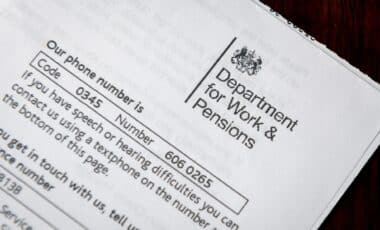Thousands in the UK could be entitled to a non-means-tested payment of up to £110 per week. The Department for Work and Pensions has detailed 87 medical conditions that qualify for this regular support under the Personal Independence Payment scheme.
The Department for Work and Pensions (DWP) has reaffirmed its commitment to supporting individuals with long-term physical or mental health conditions through the Personal Independence Payment (PIP).
This non-taxable benefit offers a financial lifeline to those who face daily challenges due to disability or illness, and the latest figures indicate a payment of up to £110.40 per week depending on assessed need.
PIP is not influenced by income or savings, making it accessible to a wide demographic. The benefit comprises two components—daily living and mobility—each with standard and enhanced rates.
As of April 2025, the enhanced weekly rate for daily living stands at £110.40, while the mobility component offers up to £77.05. Payments are issued every four weeks, bringing maximum monthly support to £749.80.
Eligibility Criteria and Scope of PIP Support
According to the DWP, PIP is designed to aid those with persistent physical or mental conditions that hinder their ability to manage basic daily tasks or mobility. Unlike other benefits, it is not tied to National Insurance contributions and is entirely non-means-tested. This ensures that claimants can qualify regardless of employment status or savings.
PIP is typically available to individuals aged between 16 and State Pension age, and it can continue beyond retirement under specific circumstances.
Claimants must undergo an assessment process, which may be conducted in person, via video call, telephone, or through written evaluation. The decision focuses not solely on the diagnosis but on how the condition impacts daily life.
The support is divided between two components. The daily living component applies to those needing help with activities like dressing, washing, or preparing food.
The mobility component is intended for those who struggle with moving around or planning a journey. Depending on the severity of the need, applicants may qualify for one or both components at either the standard or enhanced rate.
List of Qualifying Medical Conditions Released
The Daily Record has published a detailed list of 87 musculoskeletal and related medical conditions which are recognised by the DWP as potentially qualifying for PIP. These include a range of joint disorders, genetic diseases, and soft tissue injuries. The full list is as follows:
- Osteoarthritis of hip
- Osteoarthritis of knee
- Osteoarthritis of other single joint
- Primary generalised osteoarthritis
- Chronic fatigue syndrome (CFS)
- Fibromyalgia
- Pain syndromes – chronic – other/type not known
- Ankylosing spondylitis
- Psoriatic arthritis
- Reactive arthritis
- Inflammatory arthritis – other/type not known
- Juvenile chronic arthritis (Still’s disease)
- Rheumatoid arthritis
- Crystal deposition disorders – other/type not known
- Gout
- Pseudogout
- Osteochondritis
- Osteonecrosis
- Osteomalacia
- Osteoporosis
- Other metabolic and endocrine disorders of musculoskeletal system
- Paget’s disease
- Rickets
- Achondroplasia
- Epiphyseal dysplasia – multiple
- Genetic disorders, dysplasias and malformations – other/type not known
- Hereditary multiple exostosis (diaphyseal aclasis)
- Hypermobility syndrome
- Marfan’s syndrome
- Osteogenesis imperfecta
- Benign bone tumours
- Compartment syndrome (Volkmann’s ischaemia)
- Fracture complications – other/type not known
- Sudek’s atrophy
- Generalised musculoskeletal disease – other/type not known
- Adhesive capsulitis (frozen shoulder)
- Rotator cuff disorder
- Shoulder disorders – other/type not known
- Shoulder instability
- Elbow disorders – other/type not known
- Golfer’s elbow (medial epicondylitis)
- Tennis elbow (lateral epicondylitis)
- Carpal tunnel syndrome
- Dupuytren’s contracture
- Tendon lesions
- Tenosynovitis
- Wrist and hand disorders – other/type not known
- Cervical disc lesion
- Cervical spondylosis
- Neck disorders – other/type not known
- Whiplash injury
- Back pain – non-specific (mechanical)
- Back pain – specific – other/type not known
- Kyphosis
- Lumbar disc lesion
- Lumbar spondylosis (osteoarthritis spine)
- Scheuermann’s disease
- Scoliosis
- Spinal stenosis
- Spondylolisthesis
- Congenital dislocation of the hip
- Hip disorders – other/type not known
- Perthes disease
- Slipped upper femoral epiphysis
- Bursitis
- Chondromalacia patellae
- Knee disorders – other/type not known
- Ligamentous instability of knee
- Meniscal lesions
- Osgood-Schlatter’s disease
- Osteochondritis dissecans
- Recurrent patellar dislocation
- Ankle and foot disorders – other/type not known
- Club foot (talipes)
- Forefoot pain (metatarsalgia)
- Hallux valgus/rigidus
- Amputation – lower limb(s)
- Amputation – upper limb(s)
- Amputation – upper and lower limb(s)
- Injuries/fractures/dislocations of the abdomen
- Injuries/fractures/dislocations of the lower limb
- Multiple injuries/fractures/dislocations
- Injuries/fractures/dislocations of the pelvis
- Injuries/fractures/dislocations of the spine
- Injuries/fractures/dislocations of the thorax
- Injuries/fractures/dislocations of the upper limb
- Regional/localised musculoskeletal disease – other/type not known
While this list offers clear guidance, eligibility is ultimately determined by how the condition affects the individual’s daily life. Applicants are therefore encouraged to submit claims even if their condition is not listed.









